The Buda of Budapest
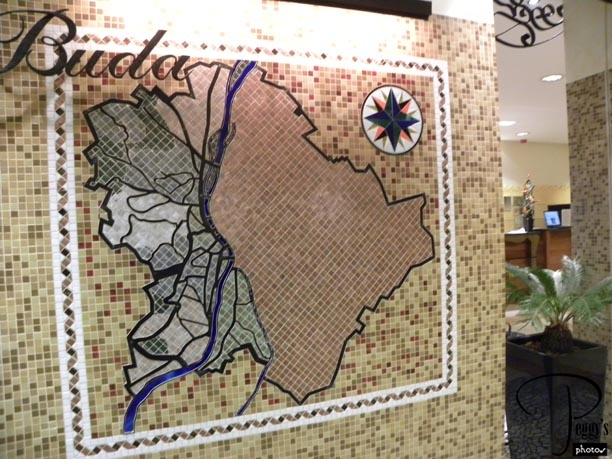
Budapest was originally three cities: Buda, Pest, and Obuda. Obuda is now a district in Budapest. The Danube River divides Buda and Pest, with Buda being a hilly area and Pest, a flat area. Our hotel was in Buda and had this interesting map on a wall.

The Buda of Budapest
The Buda of Budapest
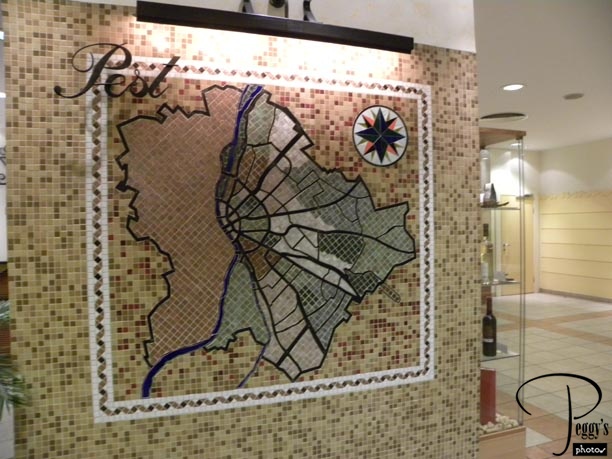
The Pest of Budapest

The Buda of Budapest
Budapest
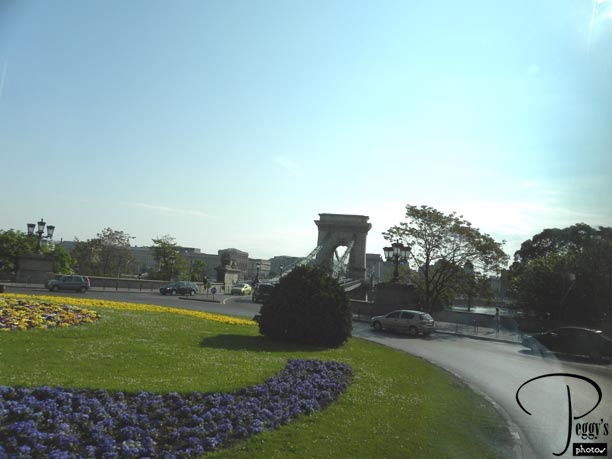
Leaving Buda to drive to Pest over the Chain Bridge.

Budapest
The Chain Bridge Over the Danube

Driving on the Chain Bridge over the Danube.

The Chain Bridge Over the Danube
The Hungarian Parliament
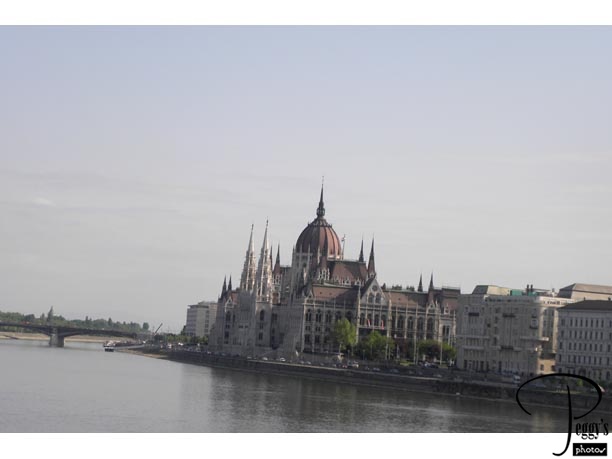
The Hungarian Parliament on the Pest side of the Danube.

The Hungarian Parliament
The Hungarian Parliament

The Parliament from its back side.

The Hungarian Parliament
The Hungarian Parliament

Another view.

The Hungarian Parliament
Our Local Guide
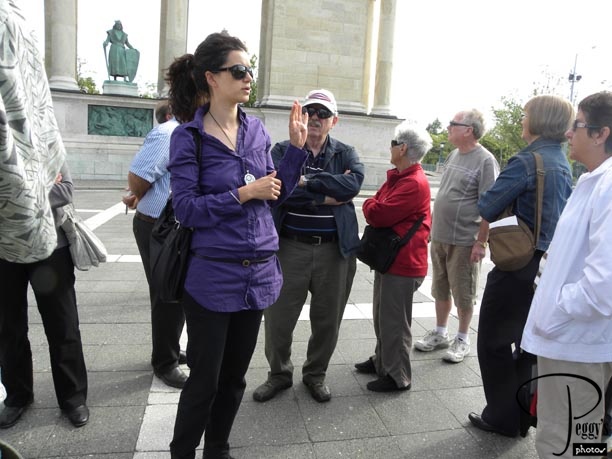
Our local Budapest guide. We are at Heroes’ Square.

Our Local Guide
Heroes’ Square
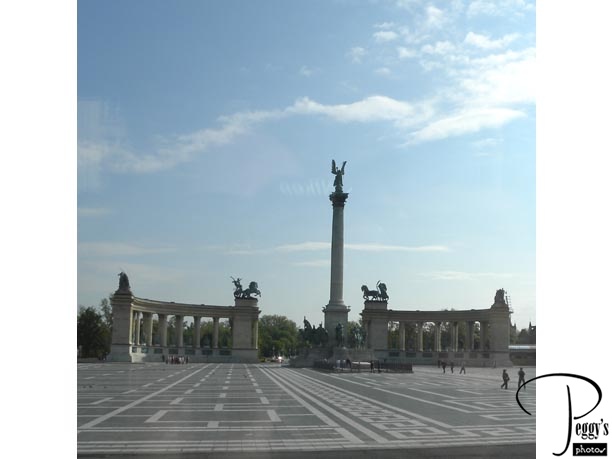
Heroes’ Square, built in 1896 for Budapest’s 1,000th birthday, a time of great building. Its Milennium Celebrations were held here.

Heroes’ Square
Heroes’ Square
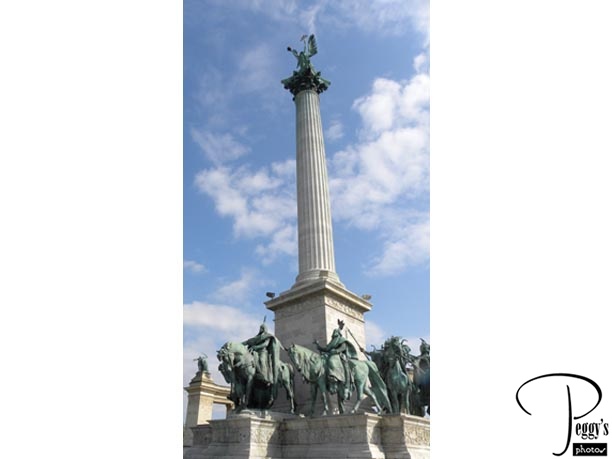
At the top of the pedestal is the Archangel Gabriel and below are statues of Hungarian leaders and politicans.

Heroes’ Square
Heroes’ Square
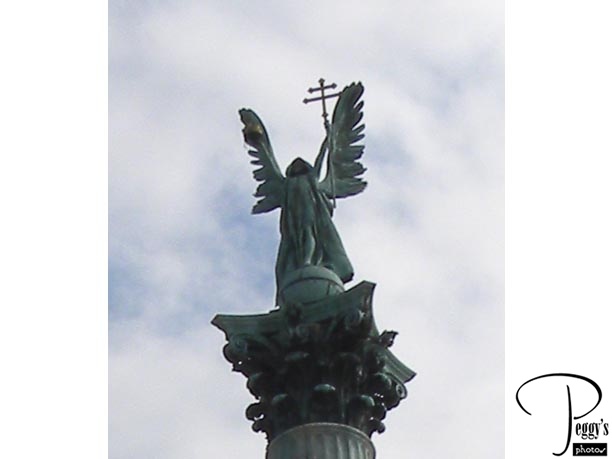
The Archangel Gabriel.

Heroes’ Square
Heroes’ Square
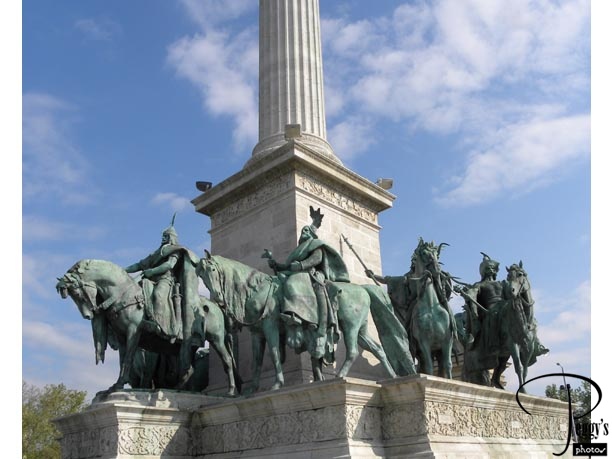
The bottom of the pedestal.

Heroes’ Square
Heroes’ Square
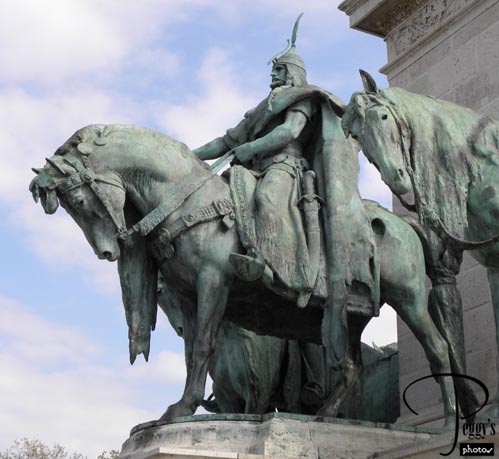
Close–up of one of the statues on the bottom of the pedestal.

Heroes’ Square
Heroes’ Square
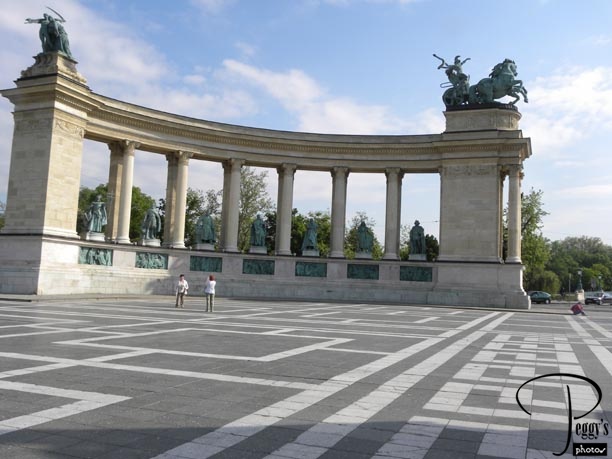
One of the colonnades at Heroes’ Square.

Heroes’ Square
Heroes’ Square
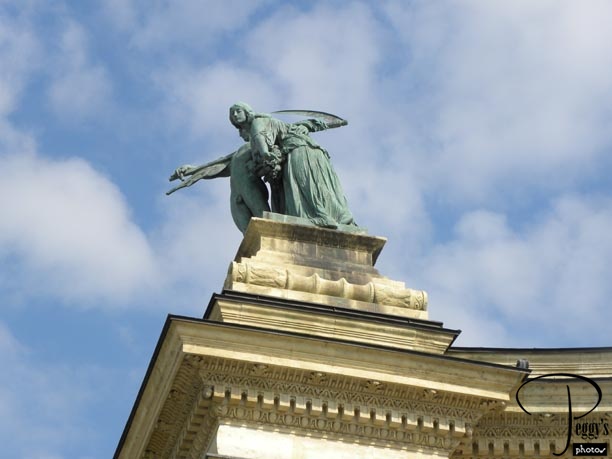
Statue on top of the colonnade.

Heroes’ Square
Heroes’ Square
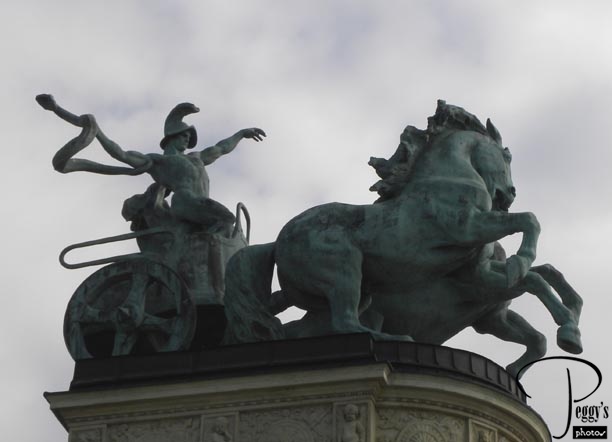
The other statue on top of the colonnade.

Heroes’ Square
Heroes’ Square
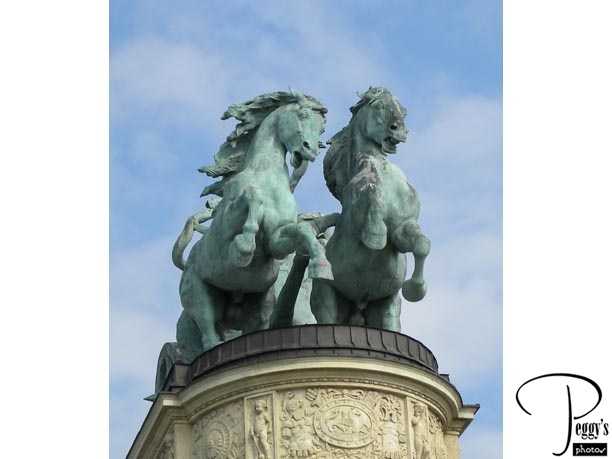
From a different angle.

Heroes’ Square
Heroes’ Square
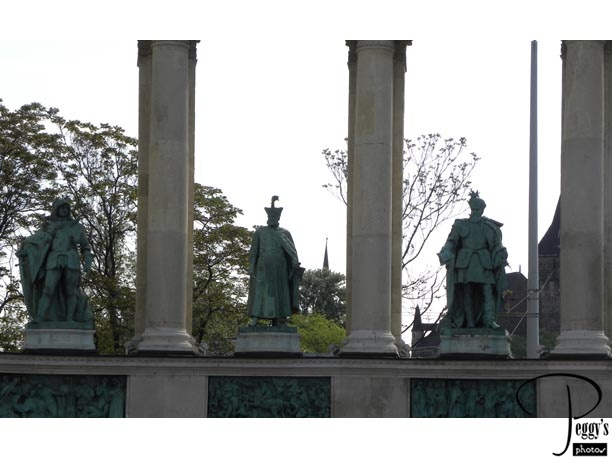
Statues between the columns.

Heroes’ Square
Heroes’ Square
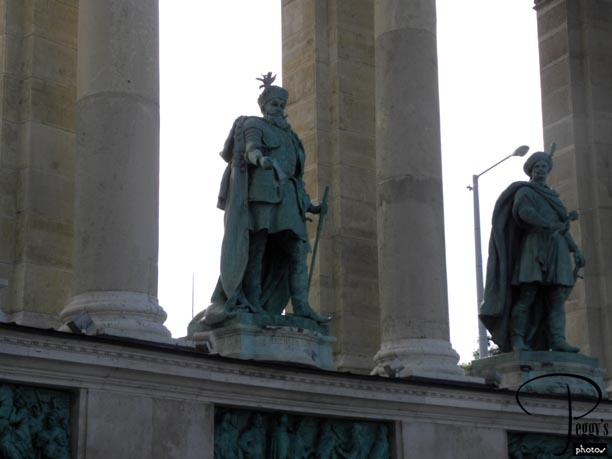
Closer–up.

Heroes’ Square
Heroes’ Square
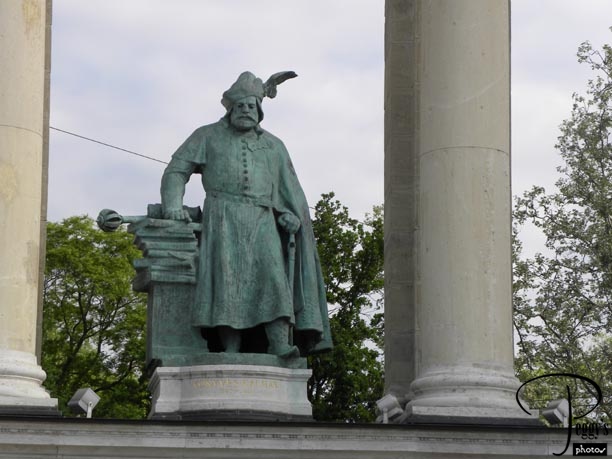
And closer–up.

Heroes’ Square
Museum of Fine Arts
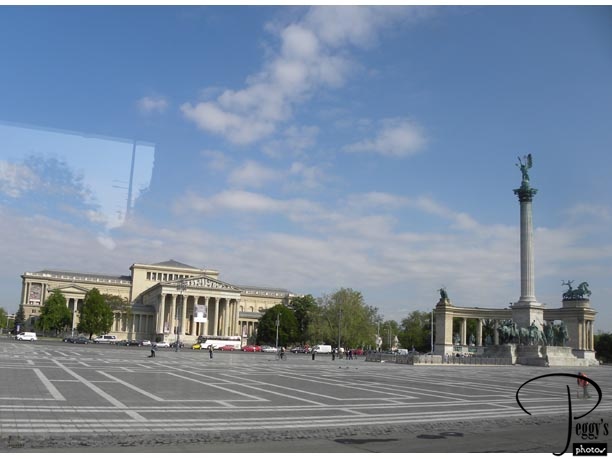
On the side of Heroes’ Square is the Museum of Fine Arts.

Museum of Fine Arts
Museum of Fine Arts
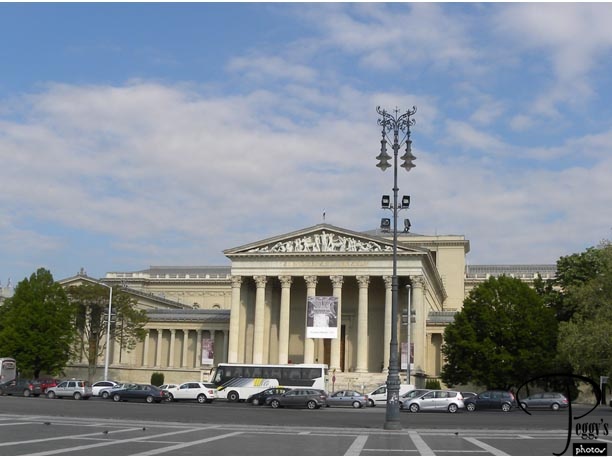
Closer–up.

Museum of Fine Arts
Museum of Fine Arts
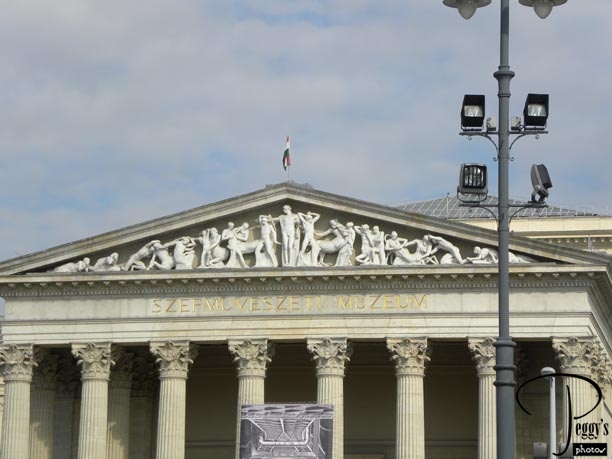
And closer–up.

Museum of Fine Arts
Museum of Fine Arts

Close–up of the sculptures.

Museum of Fine Arts
Palace of Art
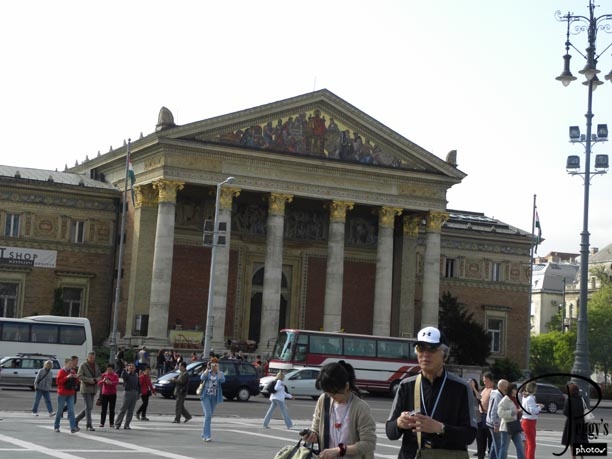
Also bordering Heroes’ Square is the Muscarnok Palace of Art.

Palace of Art
Palace of Art
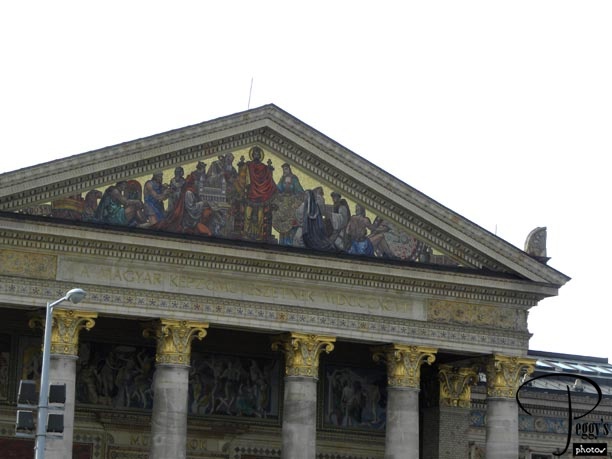
Close–up.

Palace of Art
Heroes’ Square
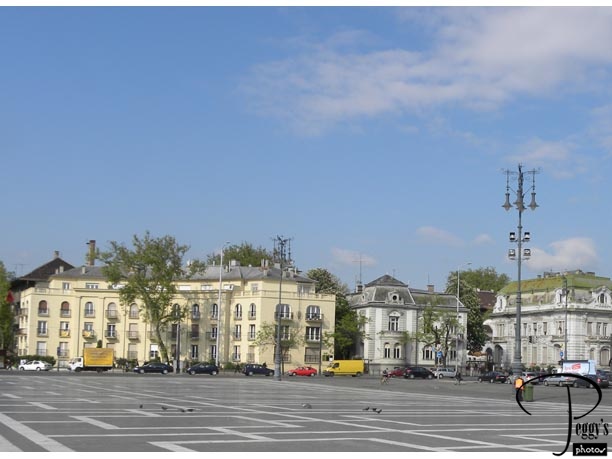
Beautiful buildings also bordering the square.

Heroes’ Square
Budapest Zoo
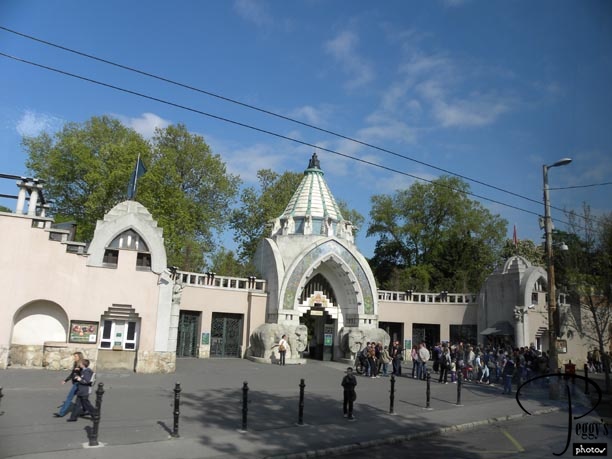
Entrance to the Budapest zoo.

Budapest Zoo
Budapest
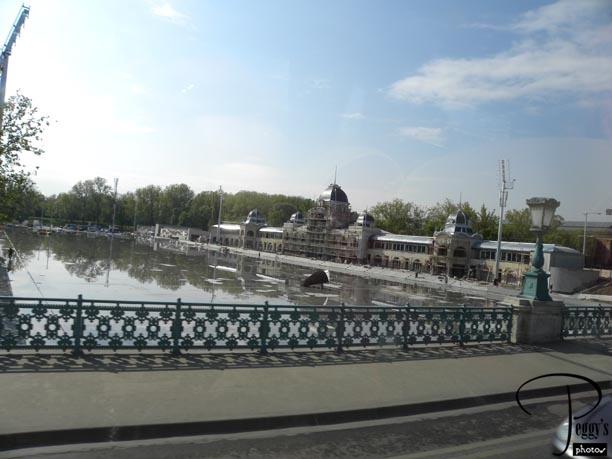
I believe this is one of the outdoor hot springs pools. Budapest is known for them.

Budapest
Szechenyi Baths
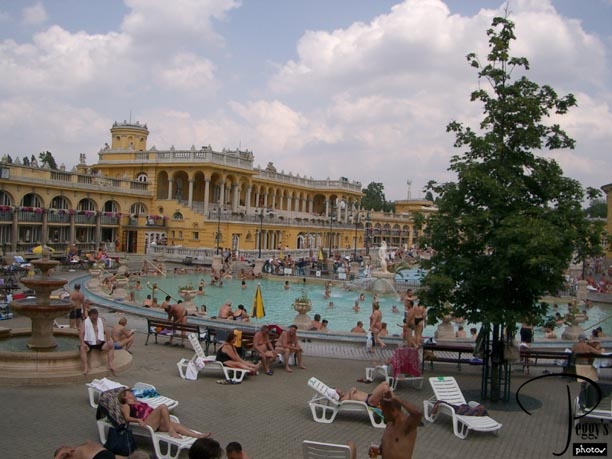
I don’t know if any of our tour group went to one of the hot springs baths, but my daughter did when she was in Budapest. This is her photo of the Neo–Baroque Szechenyi Baths. She thought it was an interesting experience.

Szechenyi Baths
Szechenyi Baths
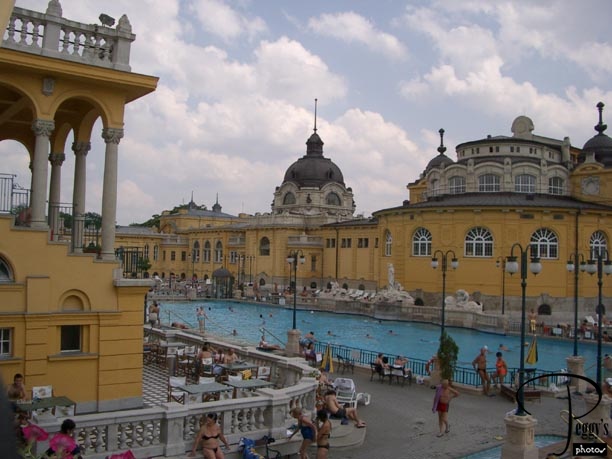
One more of her photos of the Szechenyi Baths.

Szechenyi Baths
The Great Synagogue
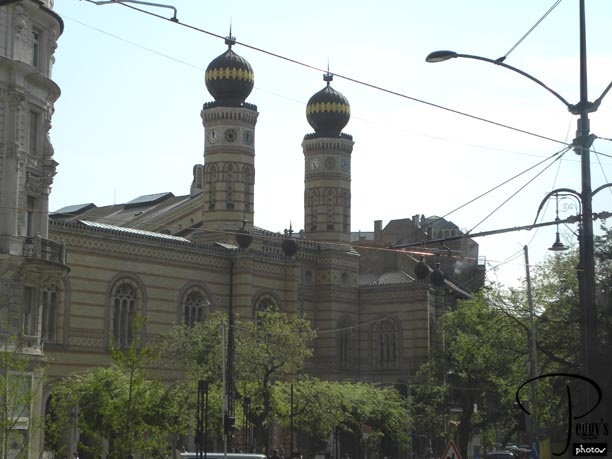
The Great Synagogue, built 1854–59 in a Byzantine–Moorish style. It is the largest synagogue in Europe and the second largest in the world after the one in New York.

The Great Synagogue
The Matyas Church on Castle Hill, Buda
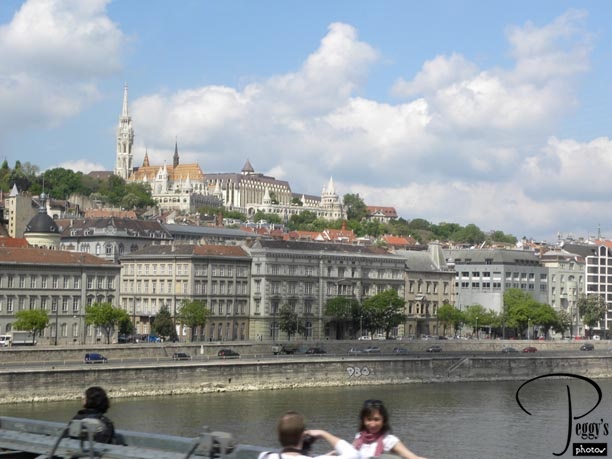
Driving back over the Chain Bridge from Pest to Buda to visit the Matyas Church on Castle Hill.

The Matyas Church on Castle Hill, Buda
The Tunnel
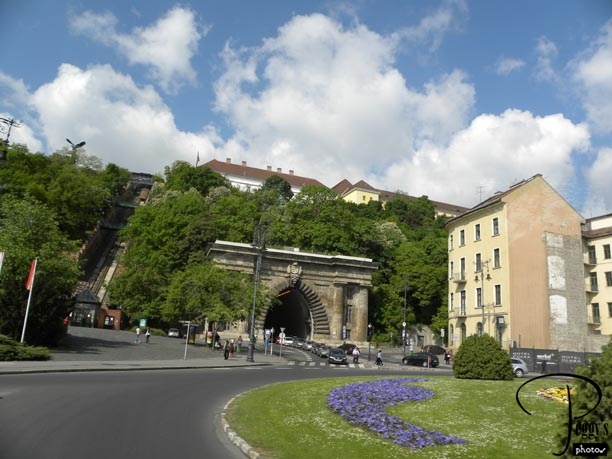
This arch leading to a tunnel is just called the Tunnel, built 1853–7. The park is the official center of Budapest. The Zero Kilometer Stone is located here from which all distances from Budapest are calculated.

The Tunnel
The Funicular
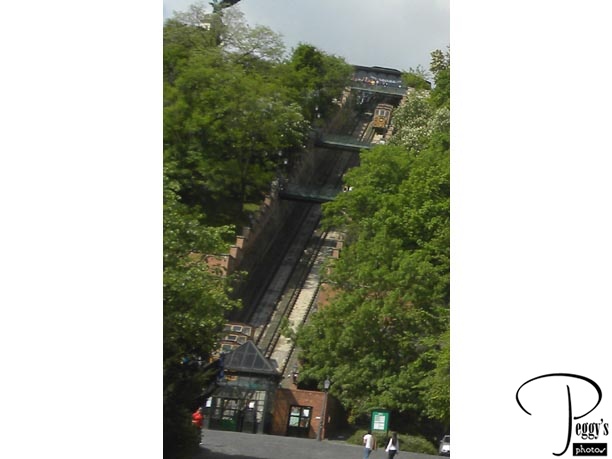
Photo: The funicular at the side of the Tunnel which will take you up the hill.

The Funicular
Castle Hill Eagle
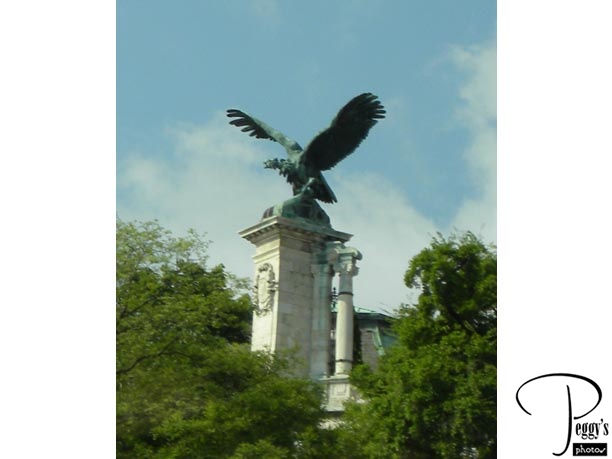
An eagle on Castle Hill.

Castle Hill Eagle
Matyas Church
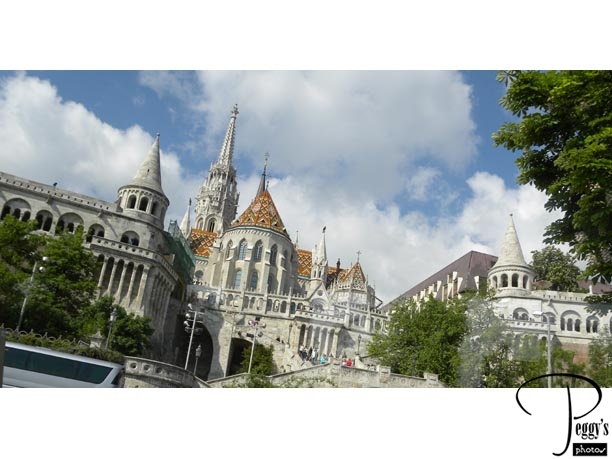
Matyas Church viewed from below.

Matyas Church
Old Town
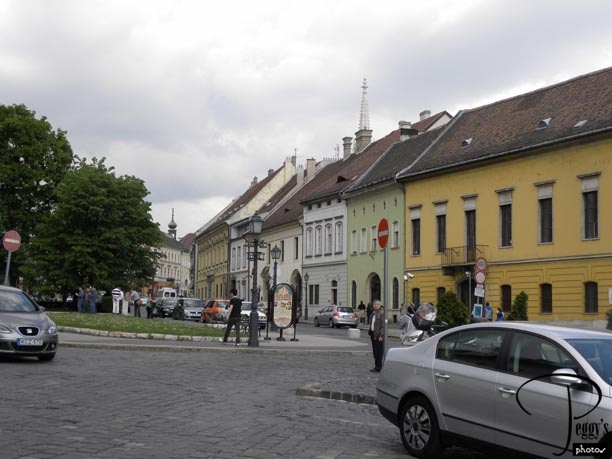
The Budapest Old Town is part of the Castle District. It dates back to the 13th century and had to be rebuilt after World War II.

Old Town
Old Town Statue
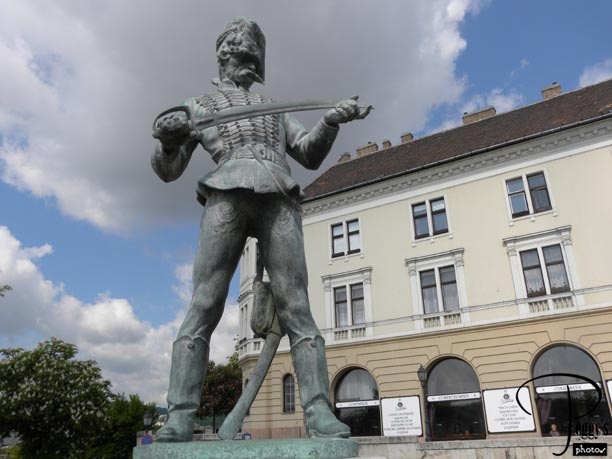
A statue we walked past in Old Town.

Old Town Statue
The Labyrinth
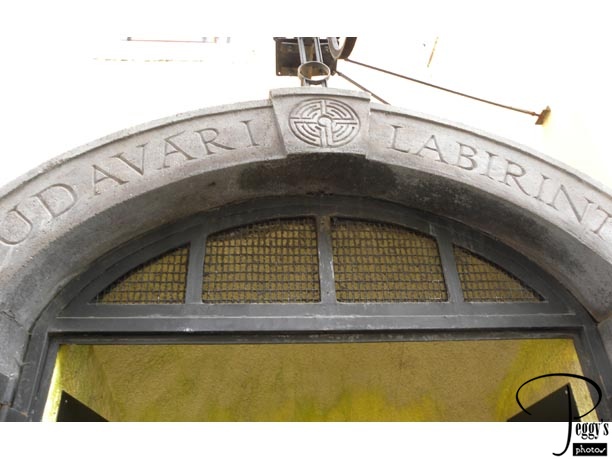
Underneath Castle Hill there are miles of caves, dungeons, springs, and cellars that you can walk through with exhibitions of Hungarian history and legend included down below. They have used by prehistoric man, for storage, as military installations, and by the locals during the siege of Buda in WWII.

The Labyrinth
The Labyrinth
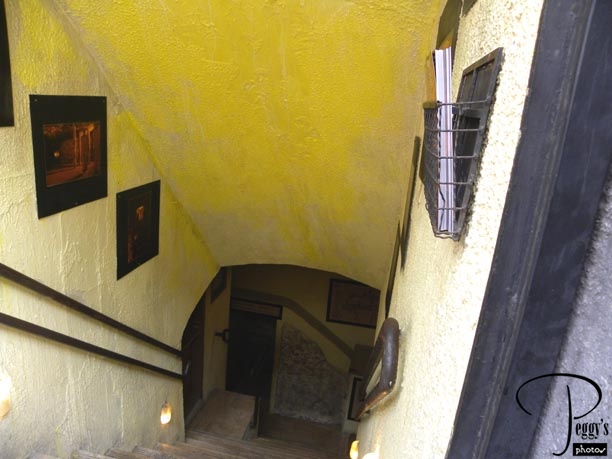
A look at the stairs into the labyrinth.

The Labyrinth
Old Town
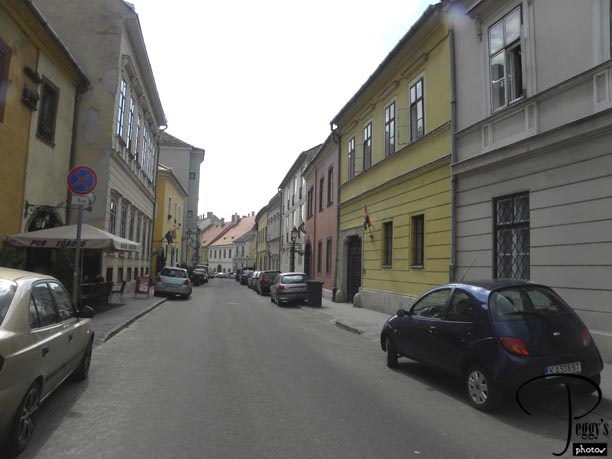
Walking farther through Old Town.

Old Town
Old Town Restaurant
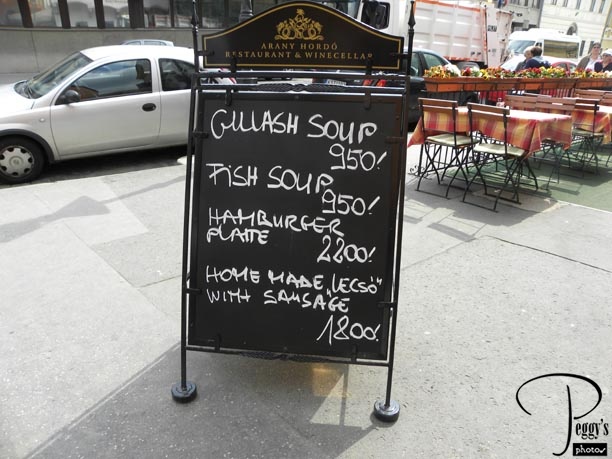
Sidewalk sign for an Old Town Restaurant with prices in Hungarian forints. Converting to U.S. dollars, the gulash soup is $5.13 and the hamburger plate is $11.88.

Old Town Restaurant
Holy Trinity Square
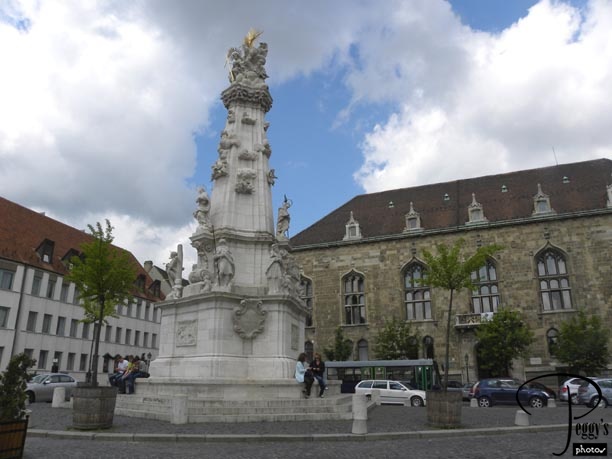
In 1713, after the plague epidemic was over, a column representing the Holy Trinity was built here.

Holy Trinity Square
Matyas Church
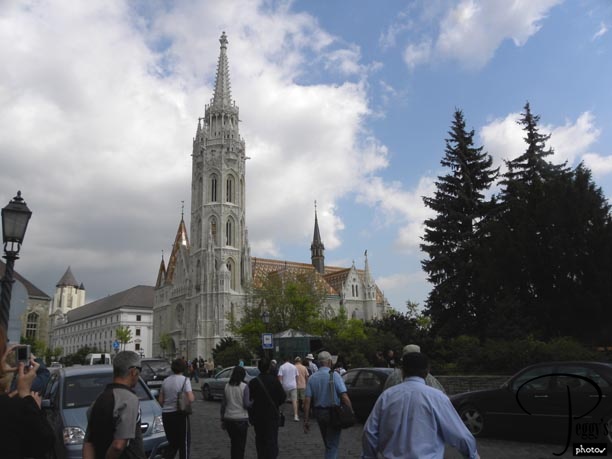
The Matyas Church is a Neo–Gothic reconstruction dating from 1874–96, with parts of the church dating back to the 14th century.

Matyas Church
Matyas Church
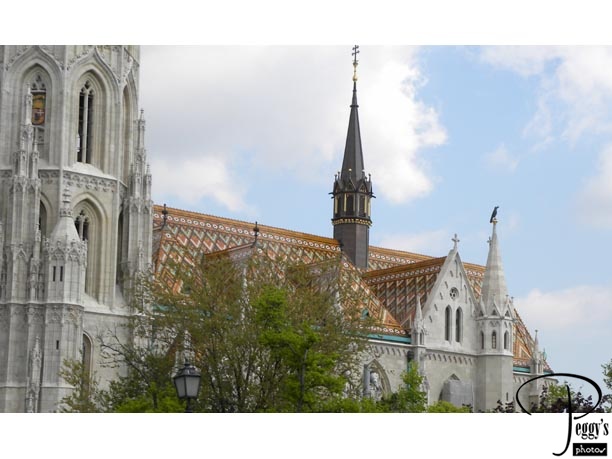
The church’s beautiful roof.

Matyas Church
Matyas Church
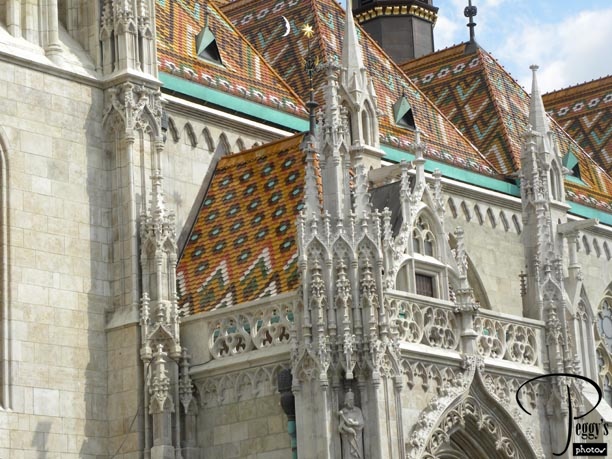
Closer–up of the roof.

Matyas Church
Matyas Church
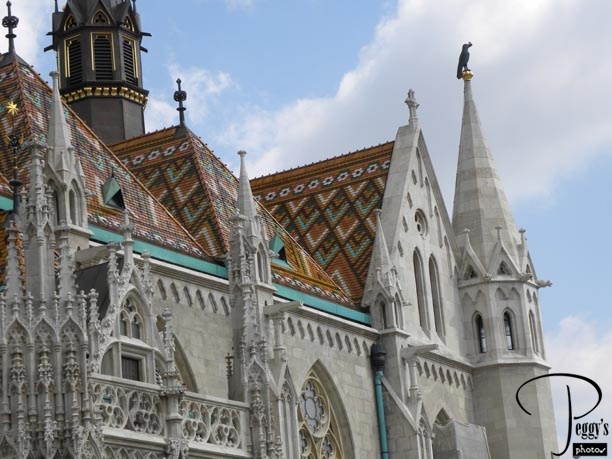
Another view.

Matyas Church
Matyas Church
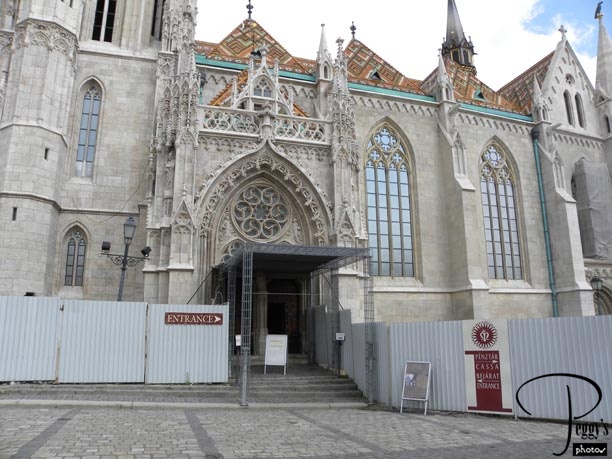
An entrance way.

Matyas Church
Matyas Church
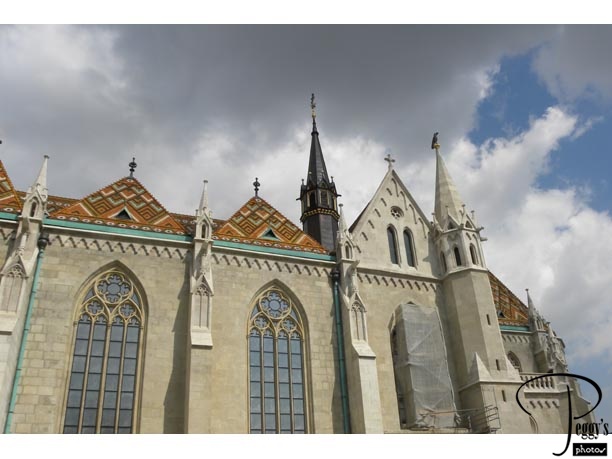
View of the top of the church.

Matyas Church
Matyas Church Courtyard
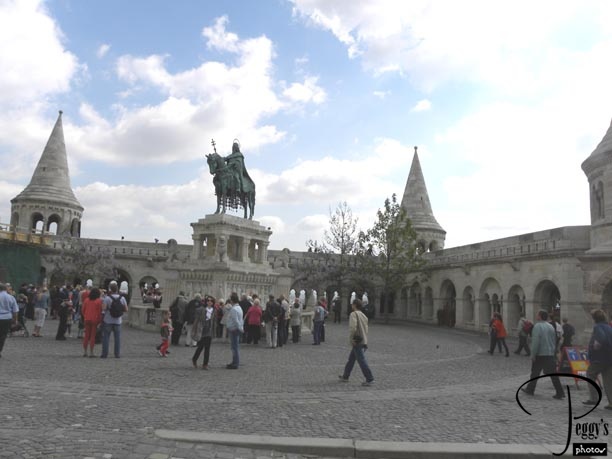
A statue of St. Stephen (or Istvan), the first Christian king of Hungary. He was crowned in the year 1000. The statue was erected in 1906.

Matyas Church Courtyard
St. Stephen
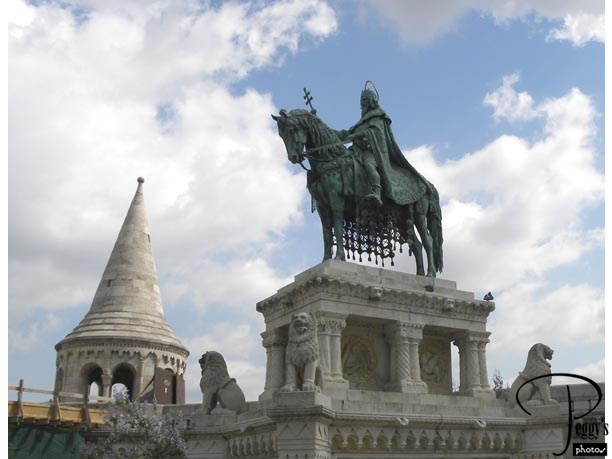
Closer–up of the statue of St. Stephen.

St. Stephen
Matyas Church
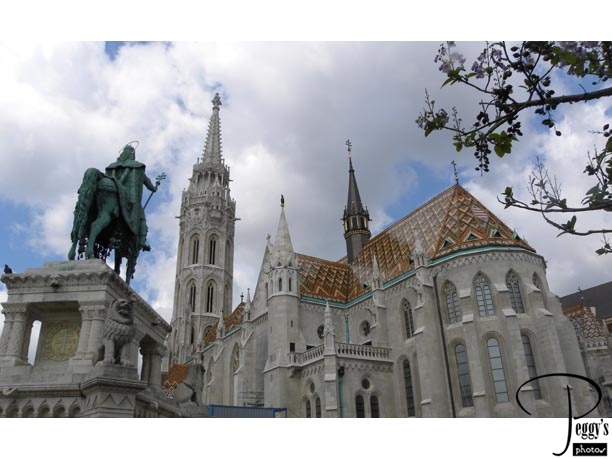
View of Matyas Church and St. Stephen.

Matyas Church
Fishermen’s Bastion
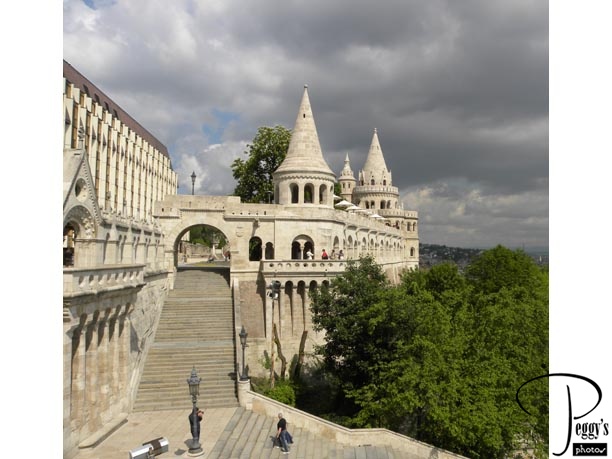
In the Middle Ages, the fish market was below this bastion. The bastion was built in 1895, with conical towers representing the tribal tents of the Magyars, the first Hungarians.

Fishermen’s Bastion
Budapest
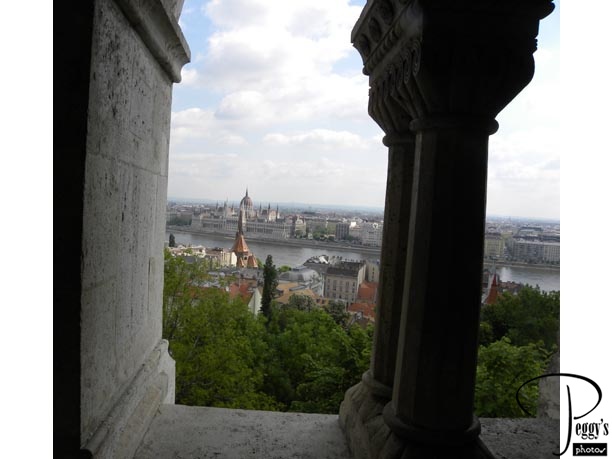
View of Budapest from the courtyard.

Budapest
Budapest
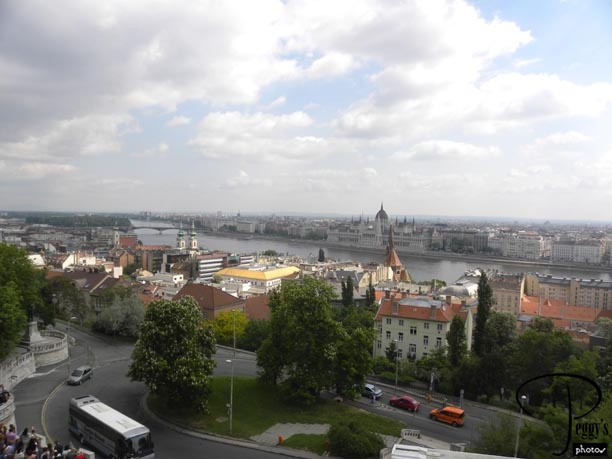
Another view of Budapest.

Budapest
Budapest
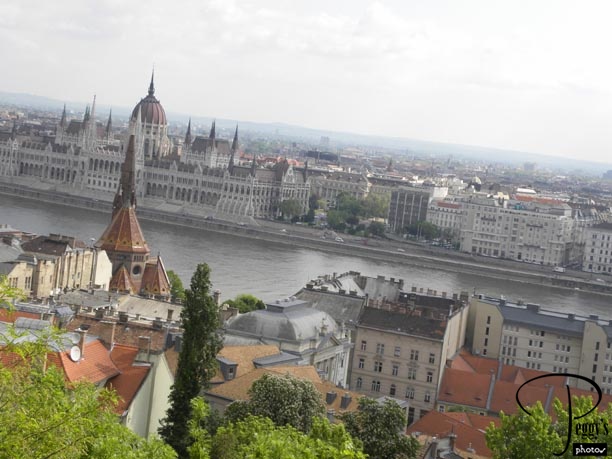
A closer–up view with the Hungarian Parliament seen on the Pest side.

Budapest
Mihaly Vorosmarty Square
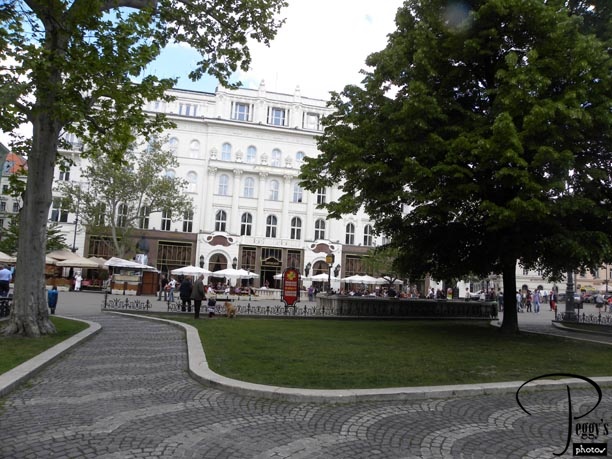
We are now back in Pest at the Mihaly Vorosmarty Square.

Mihaly Vorosmarty Square
Mihaly Vorosmarty Square
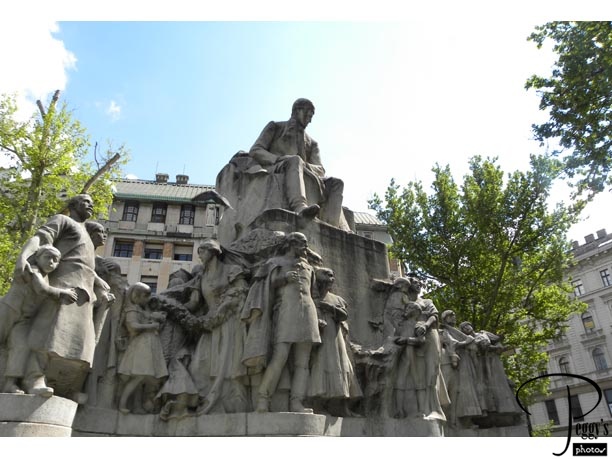
A statue in the square of Mihaly Vorosmarty, an Hungarian poet.

Mihaly Vorosmarty Square
Vaci Street
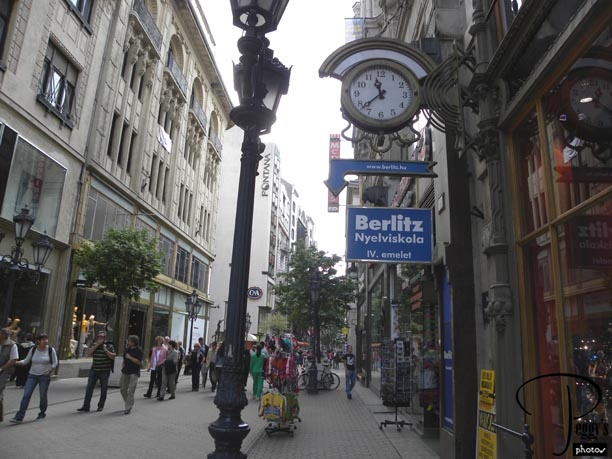
We are now walking on Vaci Street, dating from the early 19th century. Today, it is a long street (I think Zsofia said it was about 1 1/4 miles long) filled with shops and restaurants. We were left here to eat lunch and shop if we wanted.

Vaci Street
Vaci Street
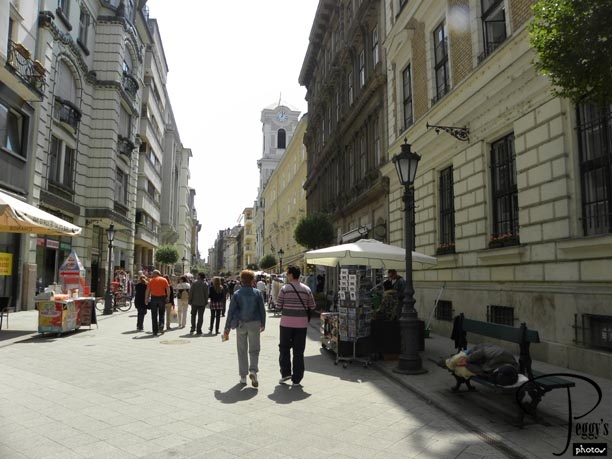
Farther along the street.

Vaci Street
Vaci Street
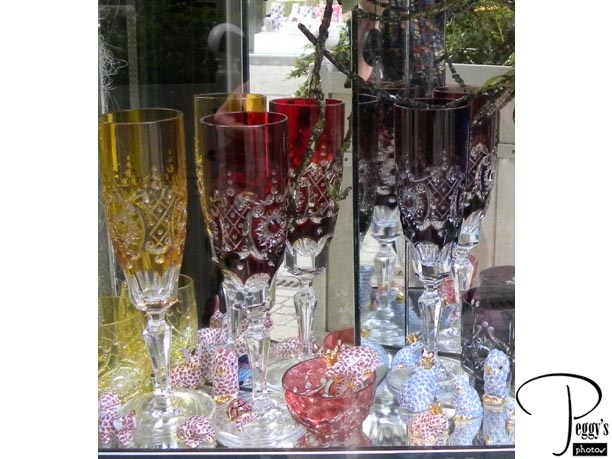
Beautiful crystal for sale, but difficult to take home with you on a plane.

Vaci Street
Vaci Street
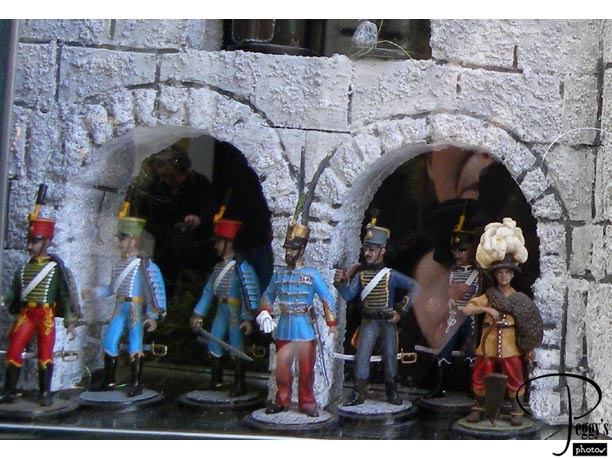
Toy tin soldiers.

Vaci Street
Vaci Street
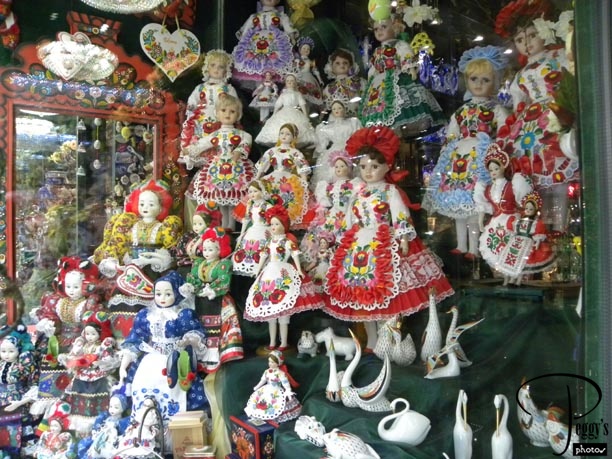
Dolls.

Vaci Street
Vaci Street
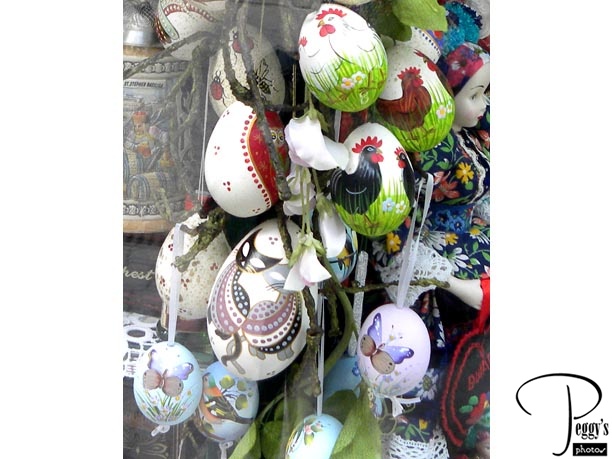
Decorated eggs.

Vaci Street
Vaci Street
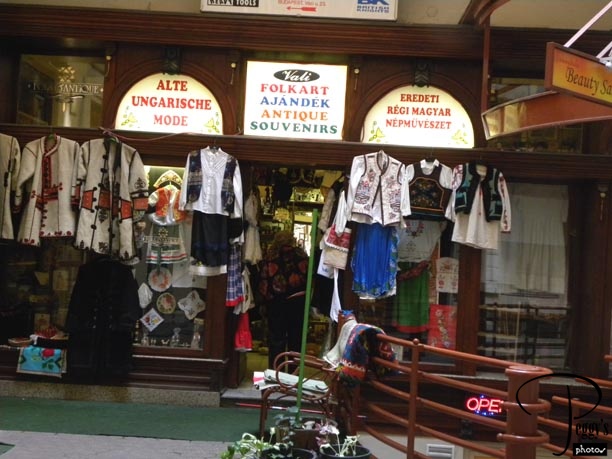
This shop was in an arcade filled with interesting shops. My daughter wanted me to try to find two matching decorated pillow cases that she had bought here about 5 years ago. Would I find them? The very first store I went into had very similar cases but they had birds on them rather than roses. One of the owners of the store told me to sit down and he would check his other stores to see if he could find the roses. He couldn’t. But I tried three other stores and found very similar cases in the fourth store––success!

Vaci Street
Vaci Street
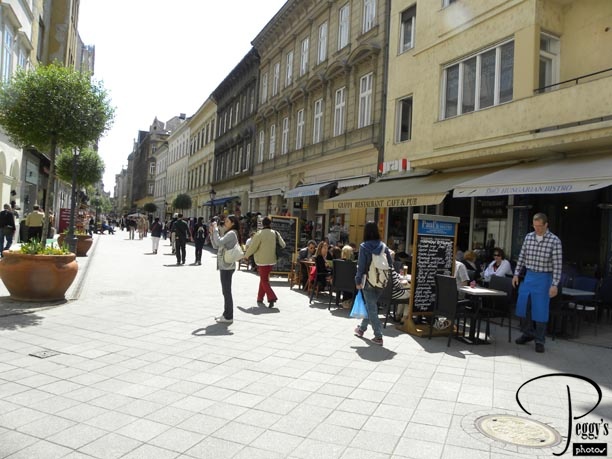
With my shopping mission accomplished, it was time for lunch. I ate at the cafe on the left front of the photo. Its sidewalk sign said it had a Caesar salad on its menu, which I ordered along with bread and butter (you pay extra for both the bread and the butter). It was the worst Caesar salad I have ever eaten, actually it was uneatable, so I filled up on the bread and butter.

Vaci Street
Vaci Street
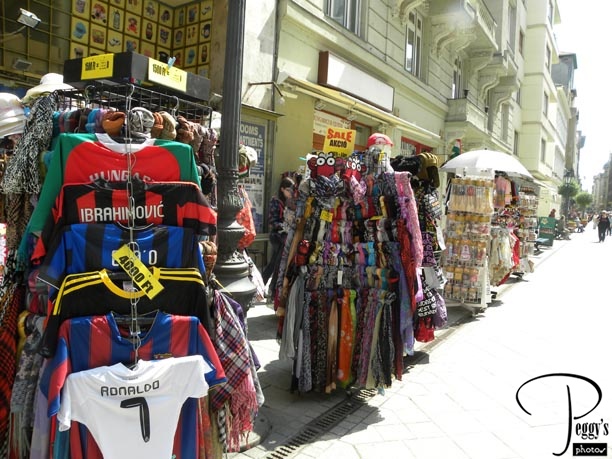
I continued walking up the street. Many sidewalk souvenir shops.

Vaci Street
Vaci Street
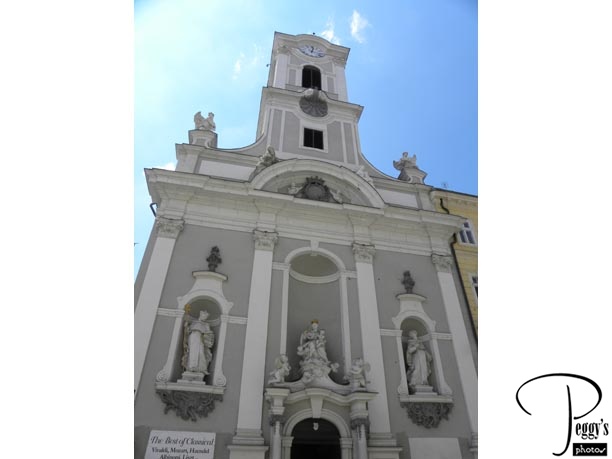
A church.

Vaci Street
Vaci Street
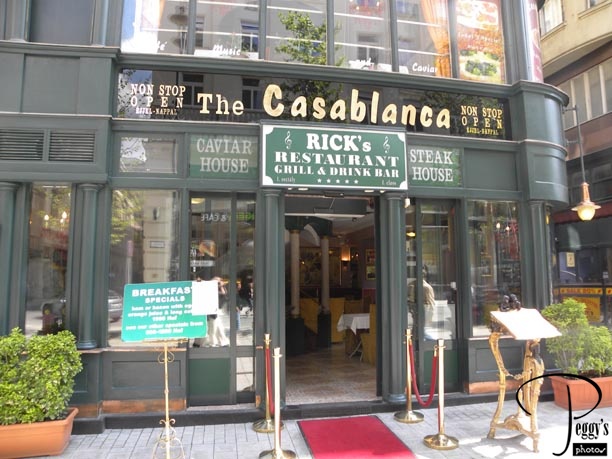
The Casablanca: Rick’s Restaurant. This would have been interesting to try (and it was “non stop open”) but I lost my confidence that I could actually order something here that I would find eatable (I am not one to try new dishes).

Vaci Street
Vaci Street
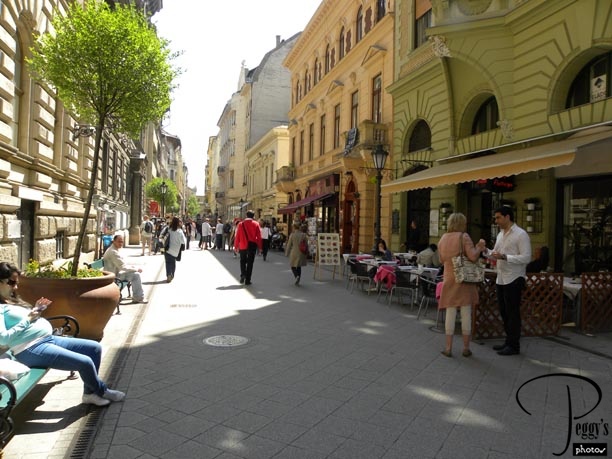
Farther along on Vaci Street.

Vaci Street
Vaci Street
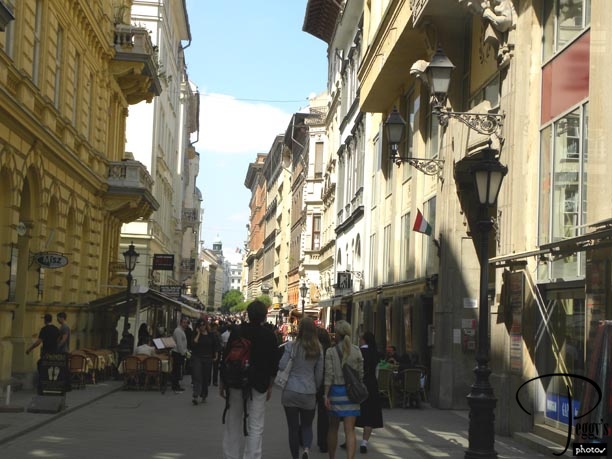
Farther along.

Vaci Street
Vaci Street
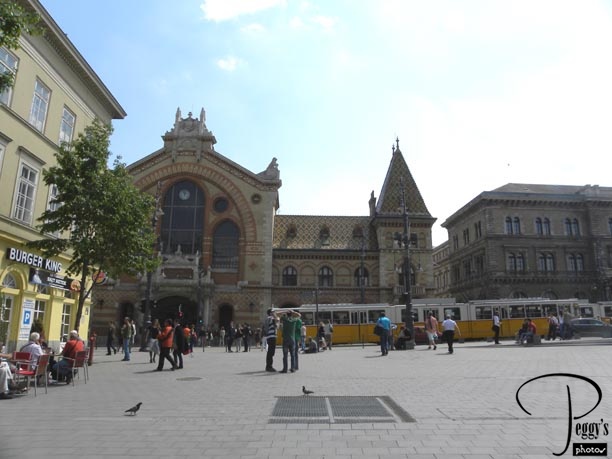
At the end of Vaci Street after a 1 1/4–mile walk. The Market is straight ahead and I have spied a Burger King on the left. I am still hungry and went to get a hamburger but they wouldn’t take euros. I hadn’t changed any money into Hungarian forints because I didn’t feel comfortable figuring out all those zeros in the exchange rate. All my other purchases had been successfully done in euros. I met up with Kevin (we had two Kevins on our tour; this was the Kevin who was traveling alone) and he offered me some of his forints (which I thought was very sweet) so I could buy a hamburger, but I declined as I didn’t want to make him short of forints and then having to exchange more money. Now that I have had to think about it, Burger King probably would have accepted my charge card. So, no hamburger, but an ice cream store would take my euros and I filled up on ice cream.

Vaci Street
The Great Market Hall
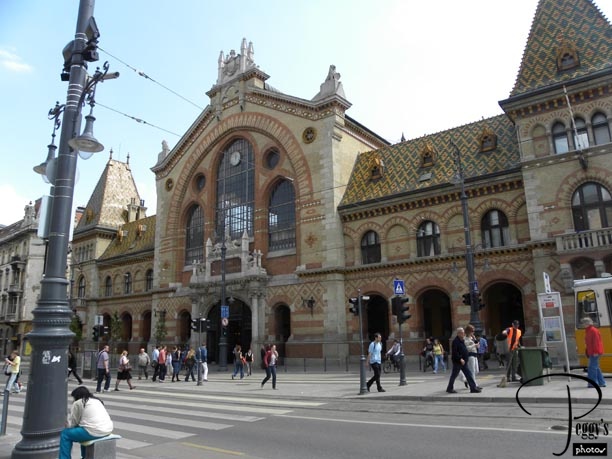
Zsofia had told us that you needed to use florints in the Great Market Hall (built 1896), so I couldn’t buy anything in it. This was a good lesson for me as to why to change at least some money into the local currency.

The Great Market Hall
The Great Market Hall

Inside the market. I only walked a bit around the ground floor, which sells produce and bakery items. The upstairs floor sells Hungarian fast food and the bottom floor has tanks of fish and stores of pickles on it.

The Great Market Hall
The Great Market Hall
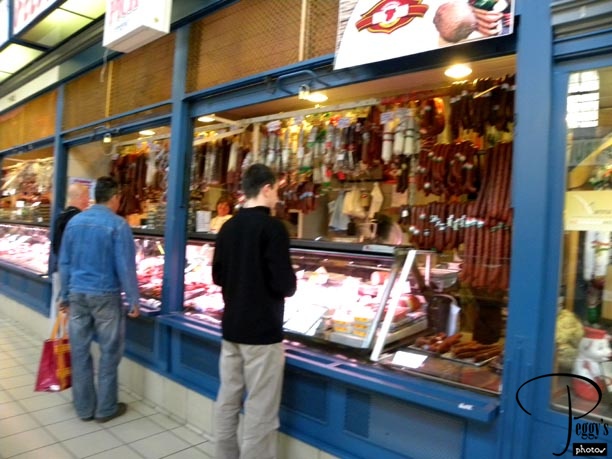
One of the stalls.

The Great Market Hall
The Great Market Hall
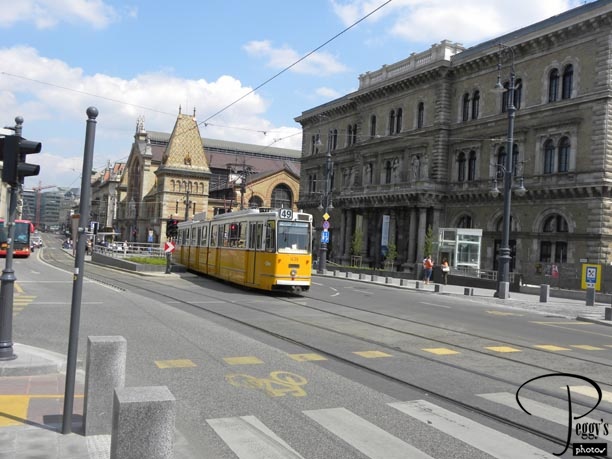
View of the street that the Great Market Hall is on.

The Great Market Hall
Danube Walk, Pest Side (See Slide Show)
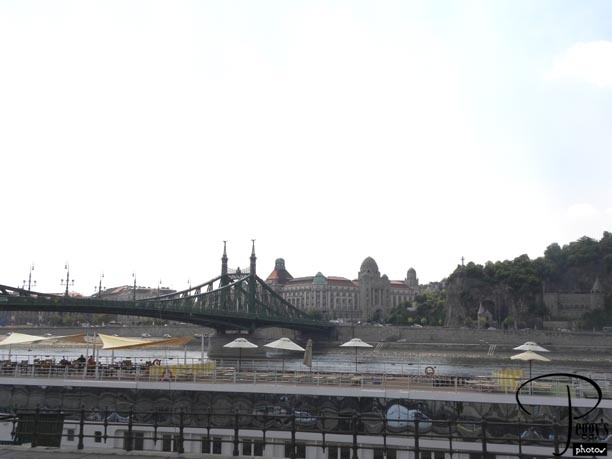
I didn’t feel like walking a 1 1/4 mile back on Vaci Street to our meeting place so I decided to walk back along the Danube. I have put my walk on a slide show: Slide Shows, Central/Eastern Europe–1, Danube Walk, Pest Side.
At the end of my Danube walk, I stopped at the Intercontinental Hotel which had an outside lounge with very comfortable seating and was a good place to people watch. I had a pastry and coffee there (I was still hungry). They also didn’t take euros, but I was able to charge my order.

Danube Walk, Pest Side (See Slide Show)
Hungarian Night
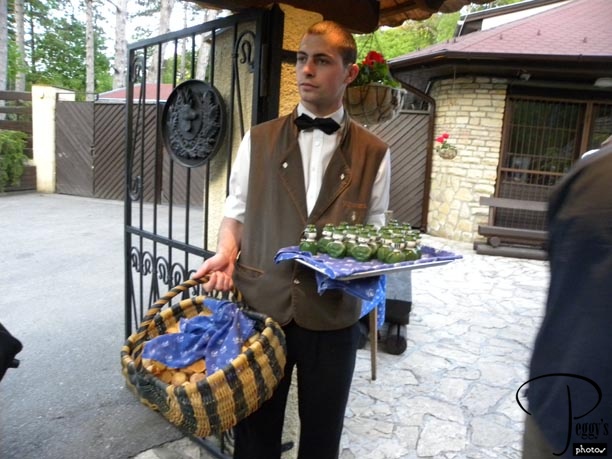
We had an optional Hungarian Night dinner and folk show tonight. We were met by this waiter offering us a fancy bread and a drink in those little men. The drink is medicinal and tastes much like Greek ouzo. I liked it and drank it all. There was a cold starting to go around our tour group and I am sure that this drink protected me from coming down with it.

Hungarian Night
Hungarian Night
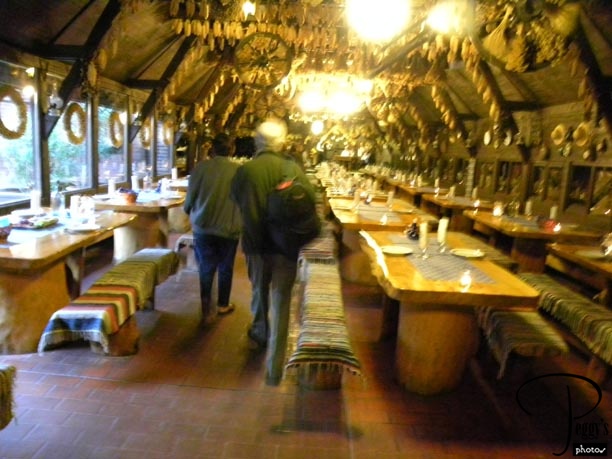
Inside the building where our Hungarian Night was being held.

Hungarian Night
Hungarian Night
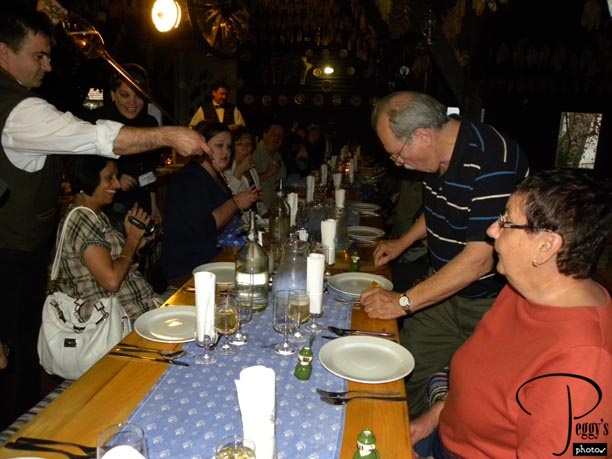
The wine was poured by the contraption that the waiter is holding in the photo. We had unlimited wine.

Hungarian Night
Hungarian Night
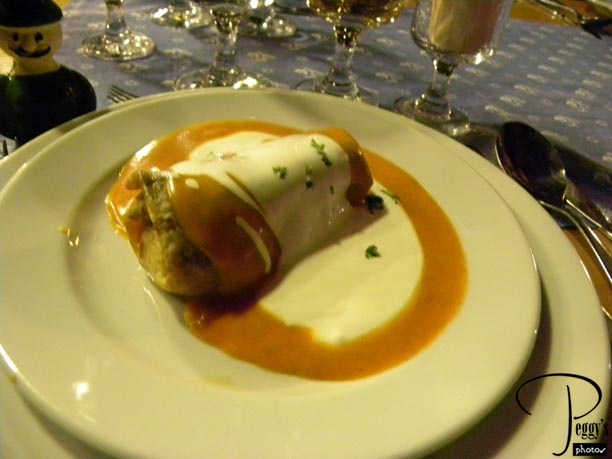
The appetizer. Very good.

Hungarian Night
Hungarian Night
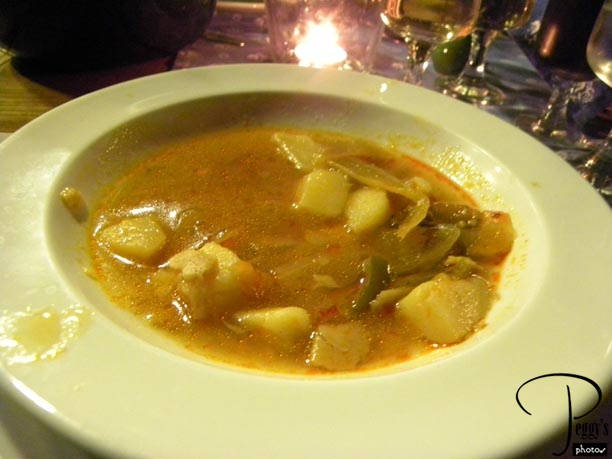
The soup.

Hungarian Night
Hungarian Night
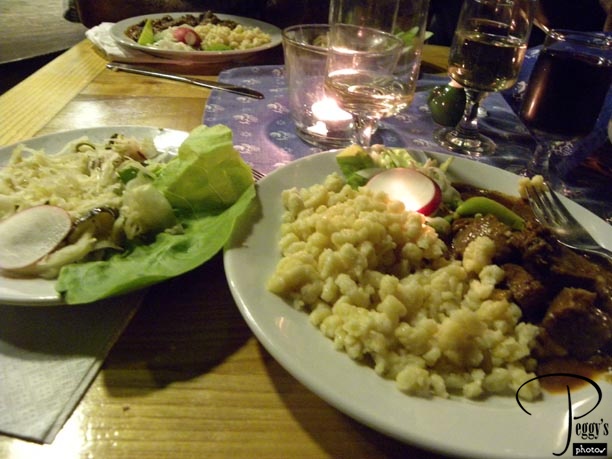
The main dish. All was tasty.

Hungarian Night
Hungarian Night Movies (See Movies)
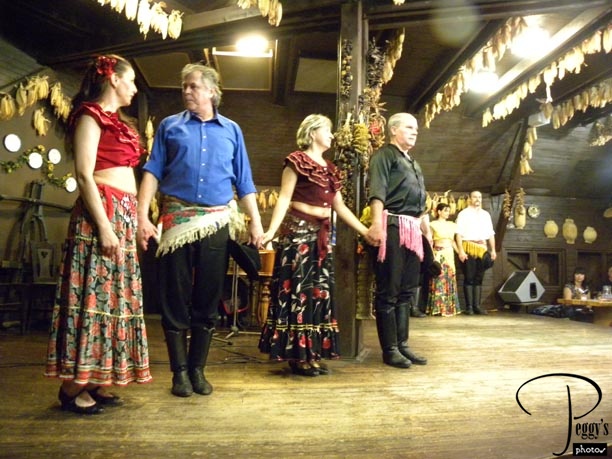
For entertainment, there was gypsy music (with some Broadway music thrown in) and folk dancing. I have put my movies of the show on this website: go to Movies, Central/Eastern Europe. There are five movies.
Tomorrow, we drive to Vienna.
